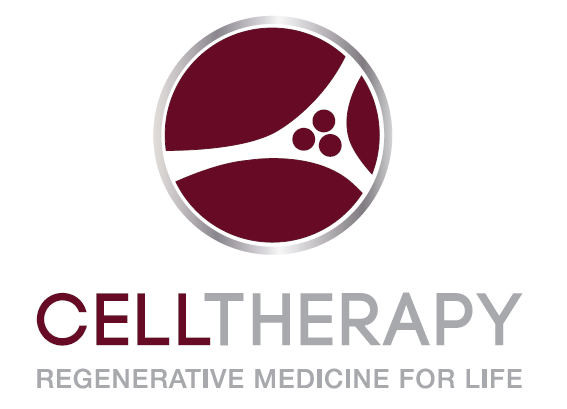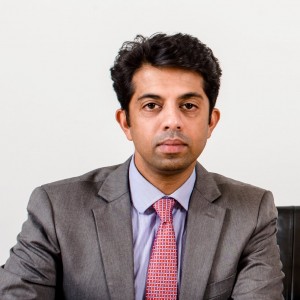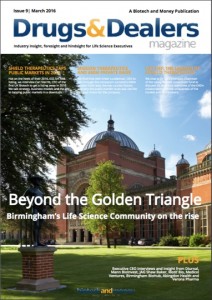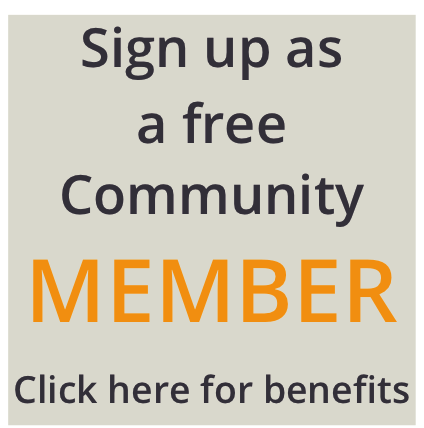How one cell therapy company is driving a paradigm shift in medical practice
Quality sites
- Online Casinos UK
- Casino Non Aams
- Casinos Not On Gamstop
- UK Casinos Not On Gamstop
- Best UK Casinos Not On Gamstop
- Casino Sites Not On Gamstop
- Meilleur Casino En Ligne Live
- Casino Sites Not On Gamstop
- Casino Sites Not On Gamstop
- Non Gamstop Casino Sites UK
- Non Gamstop Casinos
- Best Online Casino Canada
- Casino Sites Not On Gamstop
- Non Gamstop Casino UK
- UK Online Casinos Not On Gamstop
- Best Slot Sites 2025
- Casinos Not On Gamstop
- Meilleur Casino En Ligne
- Non Gamstop Casinos
- Slots Not On Gamstop
- Non Gamstop Casino
- New Online Casinos Not Registered With Gamstop
- Casino Non Aams Sicuri
- Casino Sites UK Not On Gamstop
- Casino Non Aams Italia
- Bitcoin Casino
- Meilleur Site Casino En Ligne Belgique
- Casino App
- Migliori Siti Scommesse Non Aams
- Meilleur Casino En Ligne De France
- Nouveau Jeu Casino En Ligne
- No Kyc Online Casino
- How Ajan Reginald, CEO, Cell Therapy Ltd plans to drive a paradigm shift in medical practice
- Why Cell Therapy Ltd journey so far has been so successful: key lessons
- The secrets behind how to build a spectacular management team
- What to expect next from Ajan and his team
This week we are really excited to have had the opportunity to interview one of the most exciting new biotechs emerging in the Cell Therapy space. Cell Therapy Limited (CTL) was founded in 2009 by Nobel Laureate, Professor Martin Evans and Ajan Reginald, ex-Global Head of Emerging Technologies, Roche. Its mission is to develop Regenerative Medicines for Life - to discover and develop Regenerative Medicines to treat Life threatening and Life altering diseases.
In this exclusive interview, Ajan discusses the ground breaking steps his company has made, their unorthodox financing and highly successful fundraising, how he has built a team that reads like the Who’s Who in regenerative medicine and his approach to partnering and portfolio development.
Neil Darkes, Co-CEO, Biotech and Money: Ajan, thanks for taking the time to discuss the exciting and ground-breaking approaches at Cell Therapy Ltd. As its CEO, perhaps you can start with your company elevator pitch.
Ajan: Cell Therapy develops life saving and life altering regenerative medicines. Heartcel™ our lead product repairs broken hearts. Heartcel™ successfully completed a Phase II regenerating the damaged myocardium in heart failure patients.
Tendoncel™ our 2nd product just successfully completed Phase II trial in tendon repair.
Our platform technology enables us to develop disease specific regenerative medicines that target cellular repair and regeneration. Heartcel™ and Tendoncel™ utilise very different cell types but have both demonstrated clinical and statistically significant efficacy in PII clinical trials.
ND: What is it that makes the approach you are taking unique? What are your differentiators?
Ajan: Our discovery platform drives a fundamentally different approach. Most stem cell companies follow a philosophy of having one cell that can treat all diseases. We discovered disease specific and tissue specific progenitor cells and have invented targeted regenerative medicines from these cells.
HeartCel™, utilises our immuno-modulator progenitor (iMP) cell platform with cardiac specificity, to treat heart failure. This combination of immuno-modualtion and cardiac specificity seems unique and may produce the exceptional efficacy results seen in the Phase II trial.
ND: If we look at the market from a monetary value, I’ve seen quoted a figure of $50 billion. Is that the scale of the opportunity?
Ajan: Heartcel™ focuses on the most severely affected heart failure patients which is a much smaller market but yes in the US heart failure treatment may cost ~$50 billion per year. Myocardion™ our follow-on product serves the broader mild-moderate heart failure market
ND: You completed the phase 2 in October 2014 for HeartCel, can you also expand on your franchise as a whole and about the route to market?
Ajan: About 3.8 million patients per year in Heart Failure are treated across the US and Europe. However Heartcel™ is an Orphan drug with a very narrow applicability, serving less than ~300,000 worldwide. Myocardion™ is a different cell type with broader applicability and may be able to help the majority of heart failure patients. .
With Heartcel™ we’re applying for orphan drug status in Europe and in the US we’re applying for both orphan status and Breakthrough designation. We’re also applying for accelerated assessment and fast track. So we have multiple scenarios that predict we will get to the market in 2016.
2016 is pretty close and again a very pleasant surprise. But as you’ll appreciate, things don’t often come off more quickly than you expect, so we’ve put some contingencies in place, and we’re expecting end of next year to launch.
We were looking at the data, 71 days is the current best that a company has reached market from submission. That was typically based on somewhere between 3 and 6 month survival data.
I think in our particular patient group where we’d expect to see 70% mortality in one year, we’ve seeing no deaths at over 18 months (18-29 months). Our regulatory advisors believe, that we have a strong case for both Orphan and Breakthrough and rapid approval.
Myocardion. treats the much larger mild to moderate heart failure market. This is not an orphan drug. We are starting a multicentre placebo controlled Phase III randomised trial in Europe and US to allow us to achieve regulatory approval for this launch timeframe. We hope to launch by the end of 2017.
ND: You have other candidates in development, but is the immediate focus on the late stage candidates?
Ajan: We’re in the fortunate position that we’ve got another couple of phase 2 trials that are pivotal studies. They’re both randomised, 30-40 patients. One is reading out in June this year, the next in August. The first is for an orthopaedic indication (Tendoncel), one is for a dermatology indication (Skincel). I think those are interesting because they are exemplars of our underlying platform technology.
ND: Cell therapies seem to be enjoying somewhat of a renaissance with pharma and investors. What do you think is changing now compared to a decade ago?
Ajan: While it seemed likely that this type of therapy would be safe, its been unlikely until recently to develop cellular medicines with an appropriate drug target product profile. Phase II efficacy is the key milestone and then strong IP protection, cost of goods and simple logistics are needed. ..
ND: So it’s gone way beyond the regulatory hurdles?
Ajan: I think the regulator is generally pretty supportive, looking for ways to bring truly innovative new medicines forward. Perhaps what’s exciting about regenerative medicines is the potential to shift from symptomatic treatment to actually regenerating diseased tissue. That’s exciting and would hopefully drive a paradigm shift. in the practice of medicine. Regulators do and should set a high bar for safety and also for demonstrate-able patient benefit. We therefore ensured our trial covered all the these critical endpoints including survival benefit, efficacy measures and improved quality of life.
ND: What role do you think Cell Therapy can play in that? Clearly you’re advancing at a fast rate, and quite rightly could be seen as a poster child for the industry.
Ajan: Martin and I wanted to focus on developing regenerative medicines to treat life threatening or life limiting diseases. Heart disease is the leading cause of death in the Western Europe. HeartCel™ targets patients with just 30% survival at 1 year mortality so we are absolutely delighted all of our patients have survived since treatment. 19-29 months – which is exceptional!
Our goal is to bring a new class of drugs – regenerative medicines to market - backed with solid evidence of profound patient benefit necessary to drive a paradigm shift in medical practice.
If we fulfil this goal, then yes this is the advent of the regenerative medicine era!
ND: We hear a lot about the need for a strong management team behind a company. You’ve clearly built a leadership and management team which reads like the Who’s Who. How did you go about assembling such a stellar crew?
Ajan: Martin and Mubasher are global experts in their respective fields. We’ve worked together for nearly 10 years. We’re good friends as well as professional colleagues. This is important in the tough times and for the critical discussions. We have developed a level of trust that allows us to be exceptionally open and immensely critical. Our philosophy is one of continuous improvement, which is driven by this continuous feedback. Our system is similar to the BCG feedback process but with the increased frequency of feedback customary in high level sport (weekly)
What brought us together was our belief that better medicines could be developed faster, better and cheaper. Regenerative Medicines are those better medicines and we hope CTL can continue to develop them faster. In 5 years, we’ve developed 3 medicines, largely with our own funding and using our own expertise – which is not a bad start.
We’re very hands on and try to bring all of the expertise to bear. The problem solving in drug development is complex ambiguous and variable. However there is a constant level of discipline and rigour required. It’s critical so that when a serendipitous scientific discovery occurs, it’s founded on a level of diligence and scientific excellence that enables rapid exploitation.
Sabena Sultan, our R&D Director, ensures that level of intellectual and scientific rigour and has built a pharmaceutical technology platform that may produce multiple life saving drugs. Hugely impressive!
The regenerative medicine field requires an unprecedented level of expertise. It requires excellent scientific expertise, which Martin and Sabena provide. Then clinical cellular medicine expertise for translation in which Professor Armand Keating (former President of the American Society of Haematology) is a world leader.
And finally clinical experts in the disease area – Heart failure from Prof. Steve Westaby from Oxford the word-class heart surgeon.
We’re trying to match our technical expertise with top corporate talent. Our Chairman, Lord Digby Jones of Birmingham, Mark Hughes Chief Financial Officer, David Preston Chief Operating Officer,and most recently Mark Beards ex-Goldman Sachs, McKinsey and KPMG.
The goal remains to discover breakthrough science and then effectively and rapidly develop and bring to market transformational new medicines.
ND: How instrumental has this structure been to achieving your most recent financing goals, because part of your funding approach to date has also been unique and slightly unorthodox
Ajan: Crowd funding was one part of our first external funding. The external funding kicked in on December 3rd and we raised £1 million by December 16th. 69% of this was crowd funded. We were the largest life science crowd funding raise at the time.
The team we’ve built has allowed us to have a broader appeal and what the crowd funding demonstrates Is that if you have even a somewhat complicated scientific story, by supporting that story and explaining it in a logical, rationale way, showing you have both great science and a team that adds credibility to that, then you can be successful with all types of funding.
We did believe that we had a very understandable story and I think part of that comes from the people within the company. But it also comes from the rigour.
Now whether people want to invest is another thing, but our goal with crowd funding was simply to get across to people our story, and provide them with examples of what other people have achieved in terms of valuation with similar technologies.
I think that’s as much as you can do, make it clear to people what it is that you do, so they can then go away and look for comparables, which is how anyone should invest. But then also be realistic about what your potential returns are.
ND: And you’re confident in building your own portfolio using your proprietary technology rather than seeking external partnerships?
Ajan: We’re very measured and rational in our approach to innovation and portfolio management – only developing products with a Blockbuster target product profile. We aim to market these in the Orphan or most seriously affected patient niches. And co-market or partner the products with very large markets.
Certainly with HeartCel, our plans are already advanced. There are 31 centres across Europe that we would directly sell to as an orphan drug.
The US market requires at least 70 centres which will require a difference model.
What’s critical commercially is being first to market with a differentiated product i.e., our goal remains to be first to market and best in class (regenerative medicine) for severe heart failure.
We are currently on track to achieve this goal but this transformational scientific potential requires an equivalent corporate transformation. Thus we are considering the best options to provide the corporate scale needed to maximise value creation for our shareholders.
Currently that is a private placement to raise funds to take our first product, Heartcel, to market..
ND: Ajan, thank you for your time, and best of luck.
You can find out more about Ajan and Cell Therapy Ltd at http://www.celltherapyltd.com/






Pingback: How one cell therapy company is driving a paradigm shift in medical practice | Ajan Reginald